Wilderness Equipment Mountain Expedition Handleiding
Wilderness Equipment
Tas
Mountain Expedition
Bekijk gratis de handleiding van Wilderness Equipment Mountain Expedition (36 pagina’s), behorend tot de categorie Tas. Deze gids werd als nuttig beoordeeld door 113 mensen en kreeg gemiddeld 4.4 sterren uit 57 reviews. Heb je een vraag over Wilderness Equipment Mountain Expedition of wil je andere gebruikers van dit product iets vragen? Stel een vraag
Pagina 1/36

The Australian Pack Maker
BACKPACK INSTRUCTIONS

TELL US ABOUT YOUR PURCHASE!
Send us an email telling us which pack model you have purchased and where
you bought it and we will put you in our quarterly draw to win a WE canvas
daypack. We will also send you the guidelines and details of our o er to reward
you for good photos of WE gear taken on your expeditions.
Send your email now to: henry@seatosummit.com.au
CONTENTS
BACKPACK BASICS
• FOUR ADJUSTMENT STEPS
• INTERCHANGEABLE HARNESS SIZES
• LOADING YOUR PACK
• ADJUSTING THE FRAME PROFILE
• CHECKING BACK LENGTH
GETTING THE MOST FROM YOUR WE PACK
• HEAVY LOADS
• DAY PACK NOTES
• OFF-TRACK
• CLIMBING
• WET WEATHER
• BAGGAGE CONVEYORS & LUGGAGE COMPARTMENTS
• ACCESSORIES
TAKING CARE OF YOUR PACK
• FABRICS
• ZIPS & ZIP SLIDERS
• BUCKLES
• STORAGE
• FIELD & DIY REPAIRS
WE PACK BACK SYSTEMS
• LOOK UP YOUR PACK MODEL AND READ THE NOTES ON ITS BACK SYSTEM
WARRANTY
CONTACT US

BACKPACK BASICS
Whatever the load you are carrying, comfort and energy conservation depend
on how you load your pack bag – what you put where - and then, each time
you put on your pack, making simple harness adjustments in the correct
sequence. Out there, we see far too many people with badly loaded and poorly
adjusted packs. Everything we do in pack design is directed towards your
backpacking enjoyment. You can nish o the job by taking care to follow
these basic instructions.
Most of the weight in a heavy pack is best carried at hip level, on the pelvic
structure and the associated posterior muscles. To achieve this, packs over
about 50 litres capacity invariably have a sti internal frame and a full hip
harness, the two features that distinguish a ‘backpack’ from a ‘day pack’. You
should think of the frame as propping the pack bag up o the hip harness,
concentrating the weight at hip level. If the pack bag can sag load will fall back
onto your shoulders. With loads above 15 kilograms the hip harness design also
becomes more and more important but, nally, it also all depends on the tting
and adjustment of your pack.
Successful adjustment is only possible if the back length of the pack you have
purchased matches your torso length. This is the distance from your hip bones
up to your shoulder level. It is normally your retailer’s job to ensure your new
pack is the right back length but, as a quick check, put on your pack and fasten
the hip harness at the correct level, explained below. Looking from the side the
general ‘factory-set’ curves of the pack’s ‘body’ or ‘harness’ panel should line up
well with those of your back pro le. Often there is no need to change the frame
curvature. A big gap in the middle of your back probably indicates the pack is
too short for you. For more detail go to Checking Your Pack’s Back Length at the
end of this Backpack Basics section. Also, if you have a WE pack with our unique
dual-back-length system make sure this is set for your torso length, another job
for your retailer when tting your pack.
Now, before attempting any adjustments, you must load your pack so it
simulates a real trip load, settling the pack down on your body. Place about
10kg in the pack bag but don’t just chuck everything in so it hangs like a sack
of potatoes. Read the Loading Your Pack section several pages on. Make use of
the pack compression straps to hold the load in place close to your body.
Product specificaties
| Merk: | Wilderness Equipment |
| Categorie: | Tas |
| Model: | Mountain Expedition |
Heb je hulp nodig?
Als je hulp nodig hebt met Wilderness Equipment Mountain Expedition stel dan hieronder een vraag en andere gebruikers zullen je antwoorden
Handleiding Tas Wilderness Equipment

20 April 2024

27 Juni 2023
Handleiding Tas
- Sony
- Hauck
- Basil
- Evoc
- Crivit
- LD Systems
- Black Diamond
- Vaude
- Graco
- Ortovox
- Hama
- Chief
- Coline
- FastRider
- SentrySafe
Nieuwste handleidingen voor Tas
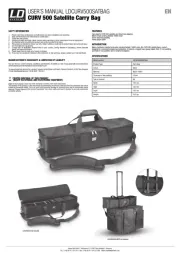
3 Augustus 2025
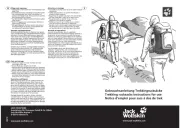
15 April 2025
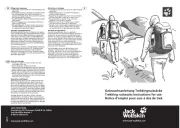
15 April 2025
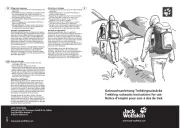
15 April 2025
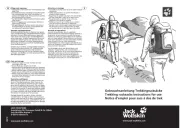
15 April 2025

15 April 2025
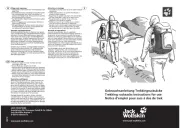
15 April 2025

15 April 2025
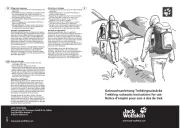
15 April 2025
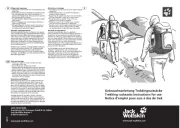
15 April 2025